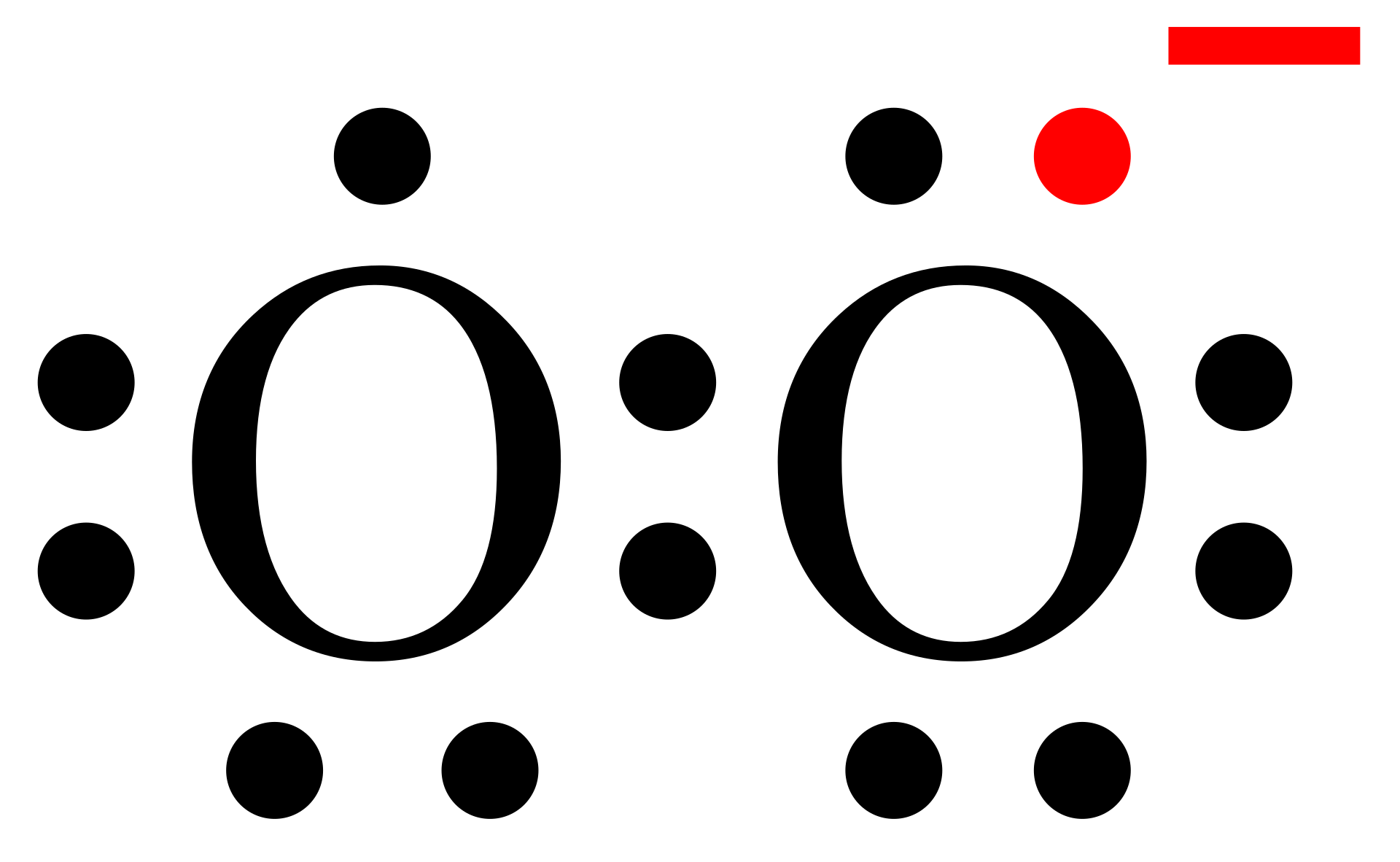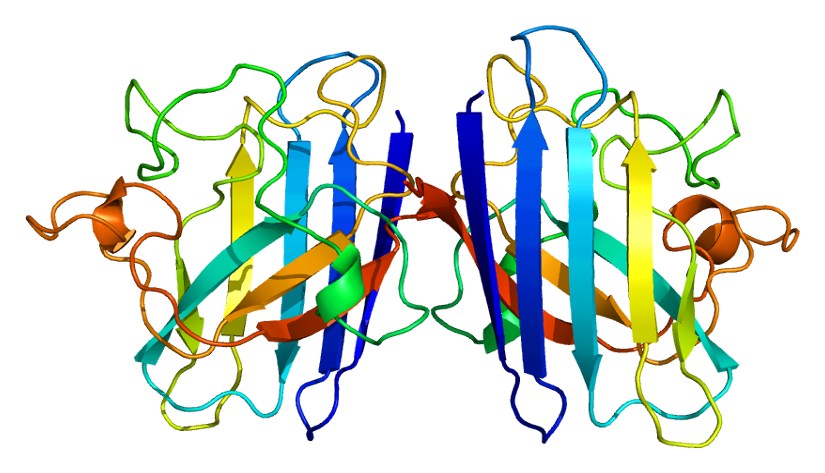The beautiful superoxide dismutases (SOD)
You may be familiar with the superoxide radical; your body certainly is. And you may also know about antioxidants and pollution. Superoxide radicals are part of life, and it has been this way since oxygen appeared in the atmosphere thanks to photosynthesis.
We, humans, and most living organisms on Earth, depend on oxygen to live. We use oxygen to oxidize food, extracting the energy we need to keep us going and thinking and writing from that food. This fundamental job of extracting energy from food by oxidizing it to carbon dioxide and water is done in good part by our mitochondria.
Why do we need SODs? Why does life need SOD? Because we live in an atmosphere that contains 21% oxygen. Not only that, but most living beings use oxygen, which brings us to what SODs do: they break down superoxides.
How do superoxides form?
Superoxide is a byproduct of mitochondrial respiration s and several other enzymes, like xanthine oxidase, that can catalyze the transfer of electrons directly to molecular oxygen under strongly reducing conditions.
What does superoxide do?
It can be useful: it is generated by the immune system to kill invading microorganisms. But otherwise, beware of superoxide! A most aggressive oxidant, it can damage molecules like DNA and proteins and structures like cell membranes.

Figure: superoxide is an ion (see that minus sign?); that extra red electron makes superoxide a most aggressive oxidant.
What do SODs do?
Because superoxide is toxic at high concentrations, nearly all organisms living in the presence of oxygen express SOD. SOD efficiently catalyzes the disproportionation of superoxide:
- 2H++ 2O−2 → O2 + H2O2
What’s so special about Skin Actives? The protein scavengers of ROS*
Most skincare products include antioxidants, usually vitamin E or ascorbic acid, or others chosen among the many available botanical antioxidants. At Skin Actives, we use the best antioxidants you see in other brands.
The difference is that we also offer purified, high specific* activity, high purity proteins that will help recycle the skin’s natural antioxidant system. Skin Actives special antioxidant proteins include superoxide dismutase, catalase, thioredoxin, glutaredoxin, and methionine sulfoxide reductase A and B.
Why antioxidant proteins? Isn’t astaxanthin good enough? Astaxanthin, like carotenes and vitamin C, is good but insufficient to maintain the sophisticated antioxidant cellular system that is vital for skin health.
What are enzymes?
Enzymes are proteins that can accelerate the rate of specific chemical reactions that would otherwise go too slowly to be compatible with life. In the laboratory, you can accelerate chemical reactions by changing the temperature or acidity of the medium. However, life has strict constraints, which in humans means about 98 degrees Fahrenheit and a pH of around 7.0. Skin Actives Scientific offers a comprehensive list of enzymatic antioxidants complementing our body’s antioxidant system.
*High specific activity proteins: Proteins can lose activity. It is possible to have a protein that is totally inactivated (like when you boil an egg), and an inactivated enzyme is worthless.
*High purity. You can add a ton of protein but if only a small fraction of that protein is the enzyme you want, you are wasting your time. This is what happens when you use “melon SOD”, which is melon juice with almost undetectable SOD activity.
Why do I say that SODs are beautiful?
My grandson can see beauty in a sports car. I can see beauty in a protein. I spent many years learning how to purify and care for them, measure activity, and everything else. I appreciate the beauty in a molecule that evolved through millions of years to do its job.
The copper in SOD
The copper in SOD is essential for activity. Does that mean that we need lots of copper in our diet? No: the copper is not consumed in the reaction: it gives and accepts electrons, but it’s not consumed in the process.
What’s special about Skin Actives new SOD?
It’s the sh-superoxide dismutase-1, a faithful imitation of the human copper/zinc SOD-1 in our body and VERY active.
Below is a ribbon representation. This SOD works as a homodimer, two identical subunits.

Figure. A ribbon representation of superoxide dismutase-1. By Emw – CC BY-SA 3.0, https://commons.wikimedia.org/w/index.php?curid=8821646. Structure and mechanism are described in Tainer et al. 1983.
SODs and healing
Although ROS* are useful in controlling infection, excess ROS* can delay healing. The presence of excess levels of ROS causes oxidative stress, leading to apoptosis of cells in the surrounding tissues and/or the disruption of redox signaling. Redox balance is maintained by antioxidative enzymes. ROS generated by several oxidases and mitochondrial respiration must be reduced mainly by antioxidative enzymes such as SOD, PRDX, GPX, and catalase. Each part of the process of wound healing requires an optimal ROS level. SOD-1 seems essential to wound healing, at least in mice.
The most remarkable antioxidant ingredient used in skincare is unique to Skin Actives: the ROS* BioNet
The ROS* BioNet supplements the antioxidant skin system and decreases oxidative stress caused by UV radiation, pollution, endogenous ROS*, etc. The key ingredients in our ROS* BioNet are purified thioredoxin, glutaredoxin, and superoxide dismutase. This synergistic combination of proteins will help the skin prevent damage from oxidative stress and prevent long-lasting consequences: wrinkles, sunspots, elastosis, and more.
Which antioxidants for your skin?
Let’s use any antioxidants that work for our skin, be it plant antioxidants or proteins that are bio-identical to our “clever” antioxidant enzymes. What Skin Actives Scientific offers you is the most comprehensive collection of antioxidants to compensate for skin that may be losing some of its intrinsic antioxidants in an environment with more ROS* than our skin can cope with.
Some Skin Actives products that contain ROS* BioNet
ROS* BioNet (previously ROS* Terminator): A concentrate of ROS* BioNet antioxidant proteins working with glutathione; you can add to a cream or serum to combat oxidative stress or use “as is.” Ingredients: ROS BioNet plus glutathione, in a synergistic “soup” of antioxidant algal extracts, including our sea kelp ferment, Porphyridium polysaccharides, fucoxanthin, and astaxanthin.
Antioxidant Serum: ROS* terminator in a serum with a stable vitamin C and hyaluronic acid, plus many botanical, water-soluble antioxidants. Ingredients: Magnesium ascorbyl phosphate (vitamin C), tetrahydro curcuminoids, ferulic acid, epigallocatechin gallate (EGCG from green tea), hesperidin methyl chalcone, lycopene, hyaluronan, niacinamide, aloe vera, Sorghum bicolor extract, carnitine, and carnosine.
Moisturizing Antioxidant Day Cream: Using cream as a carrier, we can obtain a complete antioxidant mix, including hydrophilic and lipophilic ingredients, plus our very best botanical antioxidants. The key actives are ROS* Terminator (see above), soy isoflavones, alpha-lipoic acid [R(+)], ubiquinone (coenzyme Q10), resveratrol, pterostilbene, tocotrienols, alpha-D-tocopherol (vitamin E), astaxanthin, lycopene, lutein, beta carotene, Centella Asiatica extract, some great plant polysaccharides, oils, amino acids, and more. I know, it’s a very complex formulation, but it’s what our skin needs.
Add antioxidants to your DIY formulation
Search the keyword antioxidant on our website for actives that will enrich your DIY product, making it better than anything you can find in a department store—starting with ascorbic acid and derivatives (our favorite: magnesium ascorbyl phosphate), antioxidant booster, R-alpha lipoic acid, ferulic acid, vitamin E oil, kakadu plum, amla extract (in Indian food stores), and so much more. Don’t forget the ROS* BioNet!
References
Tainer JA, Getzoff ED, Richardson JS, Richardson DC. Structure and mechanism of copper, zinc superoxide dismutase. Nature. 1983 Nov 17-23;306(5940):284-7. doi: 10.1038/306284a0. PMID: 6316150.
Kurahashi, T., & Fujii, J. (2015). Roles of Antioxidative Enzymes in Wound Healing. Journal of Developmental Biology, 3(2), 57–70. doi:10.3390/jdb3020057
Iuchi, Y.; Roy, D.; Okada, F.; Kibe, N.; Tsunoda, S.; Suzuki, S.; Takahashi, M.; Yokoyama, H.; Yoshitake, J.; Kondo, S.; et al. Spontaneous skin damage and delayed wound healing in SOD1-deficient mice. Mol. Cell. Biochem. 2010, 341, 181–194
Claims on this page have not been evaluated by the FDA and are not intended to diagnose, cure, treat or prevent any disease.
Other related posts:
Oxidation, free radicals and antioxidants, explained
How does the skin sense pollution and how it reacts.
